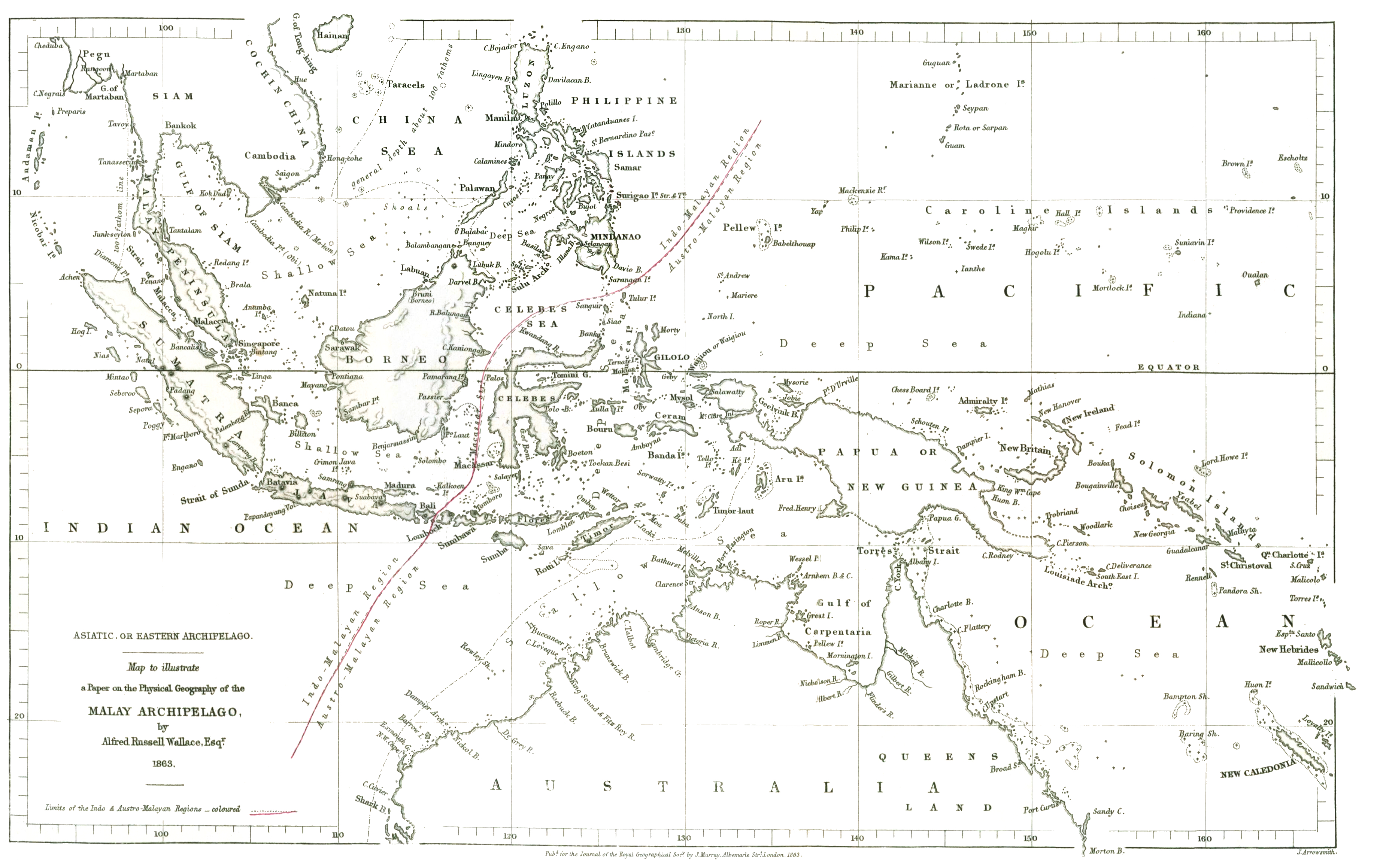The world is full of invisible, but very real lines, from the equator that bisects the planet, to the tropics of Cancer and Capricorn. But have you heard of the Wallace Line? This imaginary line starts in the Indian Ocean, cuts between Bali and Lombok, sneaks around Borneo, and ends to the east of the Philippines. While this line was first described by the naturalist Alfred Russel Wallace in 1859 (it’s been updated a couple of times since), it’s taken until now for scientists to work out what is actually going on with the animal species on either side.
The Wallace Line represents a very real boundary for animal distribution, with very different species being found on opposite sides. While some species, like kangaroos and koalas, are endemic to Australia and not found in Borneo for example, other species that originate on the northern side of the line seem happy to live on both sides of the boundary. This asymmetry in species distribution has stumped scientists for years.

The original drawing of the Wallace Line taken from On the Physical Geography of the Malay Archipelago.
“If you travel to Borneo, you won’t see any marsupial mammals, but if you go to the neighboring island of Sulawesi, you will. Australia, on the other hand, lacks mammals typical of Asia, such as bears, tigers or rhinos,” Dr Alex Skeels, from the Australian National University, said in a statement.
Now scientists might finally have an answer, and it all comes down to plate tectonics. Tens of millions of years ago, that area of the planet looked very different, with a much greater distance separating Australia from the south of Asia.
“About 35 million years ago, Australia was located much further south and was connected to Antarctica,” Skeels said. “At some point in Earth’s timeline, Australia broke away from Antarctica and over millions of years drifted north, causing it to crash into Asia. That collision gave birth to the volcanic islands that we now know as Indonesia. Our research shows far more groups of Asian fauna crossed over and established themselves in Australia than in the opposite direction.”
This breaking away of Australia from Antarctica created a new, much colder sea passage, which led to a dramatic cooling of the climate of the Earth at that time.
To find out which species had made the journey across the Wallace Line the team analyzed 20,000 species, including birds, mammals, reptiles, and amphibians. They found that those species that had evolved in dry, arid Australia were less able to survive in the wet tropical islands to the north, whereas those species with greater precipitation tolerance were more successful in making the jump across to Australia.
The team hope that this research could be used to inform predictions and decisions around when animal migration patterns are shifting due to climate change.
The study is published in Science.
Source Link: The Mystery Of The Wallace Line Might Finally Have Been Solved